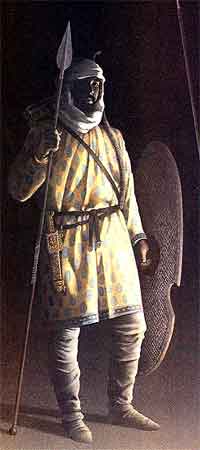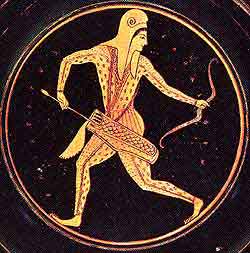THE ARMY:
The Persian army led by Xerxes was composed of all the subject nations of the Persian empire, including Egypt, India and the Ionian Greeks. Each ethnic group fought in its characteristic dress and was equipped with the weapons it preferred to fight with. Native commanders who spoke the language of each group were in charge with Persian officers supervising them. The Persian units were known for their military prowess in archery and riding. Some ethnic groups were mounted on camels or elephants. The infantry was probably a disorganized mass that overwhelmed opponents by sheer numbers. It was Persian units, the best in the army, that faced the Greeks at Marathon, Thermopylae and Plataea.
THE IMMORTALS:
the royal guard of the Persian king. It was a force of 10,000 lancers known as “ The Immortals.” They were recruited from the lower classes and functioned as palace guards. They were “chosen for quality . . . a body of Persian infantry ten thousand strong. Of these a thousand had golden pomegranates instead of spikes on the butt-ends of their spears, and were arrayed surrounded the other nine thousand, whose spears had silver pomegranates . . . the Ten Thousand—a body of picked Persian troops . . . known as the Immortals, because it was invariably kept up to strength; if a man was killed or fell sick, the vacancy he left was at once filled, so that its strength was never more nor less than 10,000. Of all the troops in the army the native Persians were not only the best but also the most magnificently equipped . . . every man glittered with the gold which he carried about his person in unlimited quantity. They were accompanied, moreover, by covered carriages containing their women and servants, all elaborately fitted out. Special foods, separate from that of the rest of the army, was brought along for them on camels and mules. Herodotus, The Persian Wars, VII, 41, 83

Immortal

archer